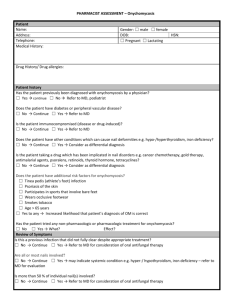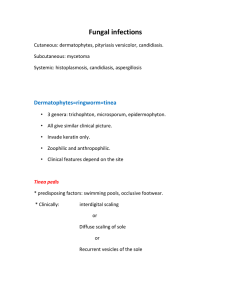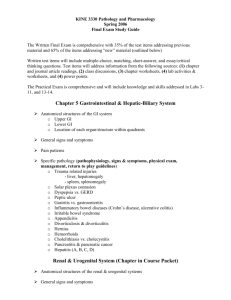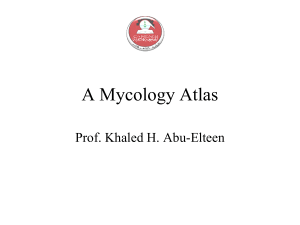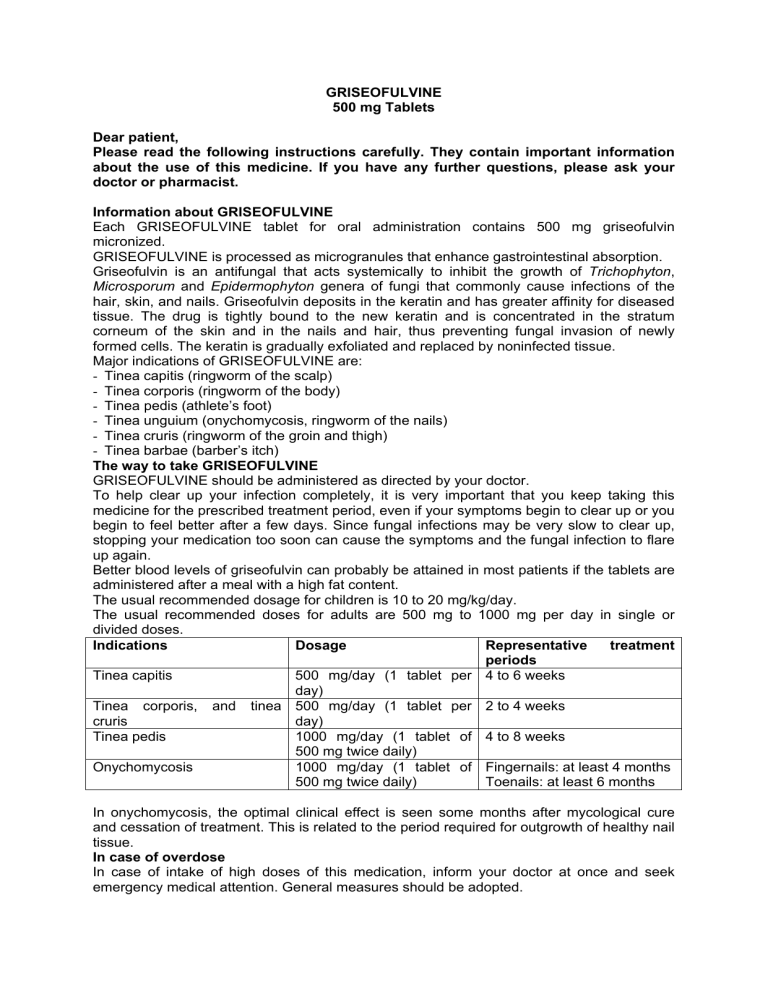
GRISEOFULVINE 500 mg Tablets Dear patient, Please read the following instructions carefully. They contain important information about the use of this medicine. If you have any further questions, please ask your doctor or pharmacist. Information about GRISEOFULVINE Each GRISEOFULVINE tablet for oral administration contains 500 mg griseofulvin micronized. GRISEOFULVINE is processed as microgranules that enhance gastrointestinal absorption. Griseofulvin is an antifungal that acts systemically to inhibit the growth of Trichophyton, Microsporum and Epidermophyton genera of fungi that commonly cause infections of the hair, skin, and nails. Griseofulvin deposits in the keratin and has greater affinity for diseased tissue. The drug is tightly bound to the new keratin and is concentrated in the stratum corneum of the skin and in the nails and hair, thus preventing fungal invasion of newly formed cells. The keratin is gradually exfoliated and replaced by noninfected tissue. Major indications of GRISEOFULVINE are: - Tinea capitis (ringworm of the scalp) - Tinea corporis (ringworm of the body) - Tinea pedis (athlete’s foot) - Tinea unguium (onychomycosis, ringworm of the nails) - Tinea cruris (ringworm of the groin and thigh) - Tinea barbae (barber’s itch) The way to take GRISEOFULVINE GRISEOFULVINE should be administered as directed by your doctor. To help clear up your infection completely, it is very important that you keep taking this medicine for the prescribed treatment period, even if your symptoms begin to clear up or you begin to feel better after a few days. Since fungal infections may be very slow to clear up, stopping your medication too soon can cause the symptoms and the fungal infection to flare up again. Better blood levels of griseofulvin can probably be attained in most patients if the tablets are administered after a meal with a high fat content. The usual recommended dosage for children is 10 to 20 mg/kg/day. The usual recommended doses for adults are 500 mg to 1000 mg per day in single or divided doses. Indications Dosage Representative treatment periods Tinea capitis 500 mg/day (1 tablet per 4 to 6 weeks day) Tinea corporis, and tinea 500 mg/day (1 tablet per 2 to 4 weeks cruris day) Tinea pedis 1000 mg/day (1 tablet of 4 to 8 weeks 500 mg twice daily) Onychomycosis 1000 mg/day (1 tablet of Fingernails: at least 4 months 500 mg twice daily) Toenails: at least 6 months In onychomycosis, the optimal clinical effect is seen some months after mycological cure and cessation of treatment. This is related to the period required for outgrowth of healthy nail tissue. In case of overdose In case of intake of high doses of this medication, inform your doctor at once and seek emergency medical attention. General measures should be adopted. In case of missed dose Take the missed dose as soon as you remember unless the next intake is near. Go on taking the next scheduled dose as directed. Do not take a double dose at once. Contraindications This drug is contraindicated in case of: - Known hypersensitivity to any of the components - Porphyria - Severe liver disease - Lupus erythematosus - Pregnancy Precautions - Prior to therapy, the type of fungi responsible for the infection should be identified. - General measures in regard to hygiene should be observed to control sources of infection or reinfection. - Concomitant use of appropriate topical agents is usually required particularly in the treatment of tinea pedis. - Inform your doctor before using this medication in case of pregnancy or lactation. It is recommended not to initiate treatment with this drug during pregnancy or lactation. This drug is contraindicated in pregnancy and women should not become pregnant during therapy, or within 1 month of stopping therapy. - Patients on prolonged therapy with this drug require periodic monitoring of organ system function including renal, hepatic and hemopoietic. - Since griseofulvin is derived from species of penicillin, the possibility of cross sensitivity with penicillin exists; caution should be taken when administered to penicillin-sensitive patients. - Avoid prolonged exposure to sunlight during treatment with this medication. - This drug may impair the ability to drive or operate machinery. Associations with other medications Please inform your doctor if other medicines are being taken or have been taken recently. This drug may increase the rate of metabolism and diminish the effects of some drugs. It is recommended to avoid alcoholic beverages during treatment with this medication. The concomitant administration of griseofulvin has been reported to reduce the efficacy of oral contraceptives and to increase the incidence of breakthrough bleeding. Additional contraceptive precautions should be used during treatment. Caution should be used when administered concomitantly with oral anticoagulants, barbiturates, cyclosporine, tacrolimus, methadone and zidovudine. Adverse reactions This drug is generally well tolerated when used as directed. Adverse effects, if they occur, are usually mild and transient. The most reported adverse reactions include hypersensitivity reactions, skin rashes, urticaria, oral thrush, dry mouth, an altered sensation of taste, nausea, vomiting, epigastric distress, diarrhea, headache, fatigue, blood disorders, dizziness, insomnia, or mental confusion. Inform your doctor if any adverse effect appears or becomes bothersome. Storage Store at controlled room temperature (up to 25°C), protected from light and humidity, beyond the reach of children. The expiry date is printed on the pack; don’t use this medicine after this date. Pack Presentation GRISEOFULVINE tablets, griseofulvin micronized 500 mg, pack of 20 tablets Revision date: 07/2006 GRIT5/002
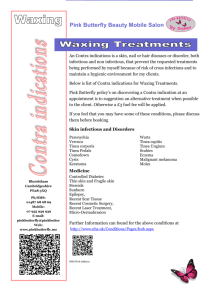
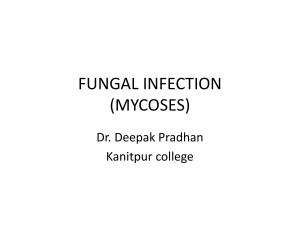
![Occupational Health - Zoonotic Disease Fact Sheets #15 DERMATOMYCOSES Foot)]](http://s2.studylib.net/store/data/013216770_1-db2cdf56a16f26d122fecafe6758caad-300x300.png)

